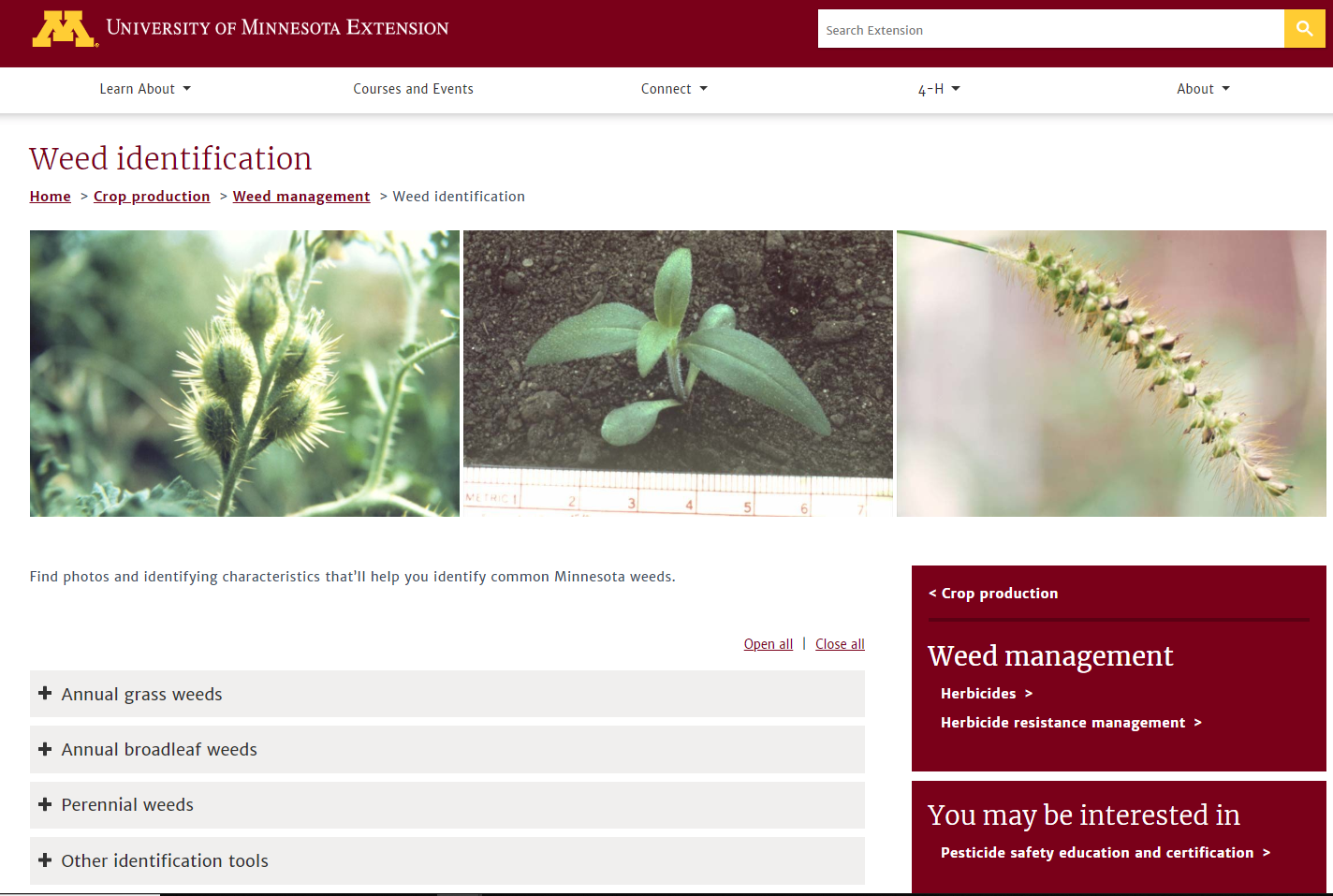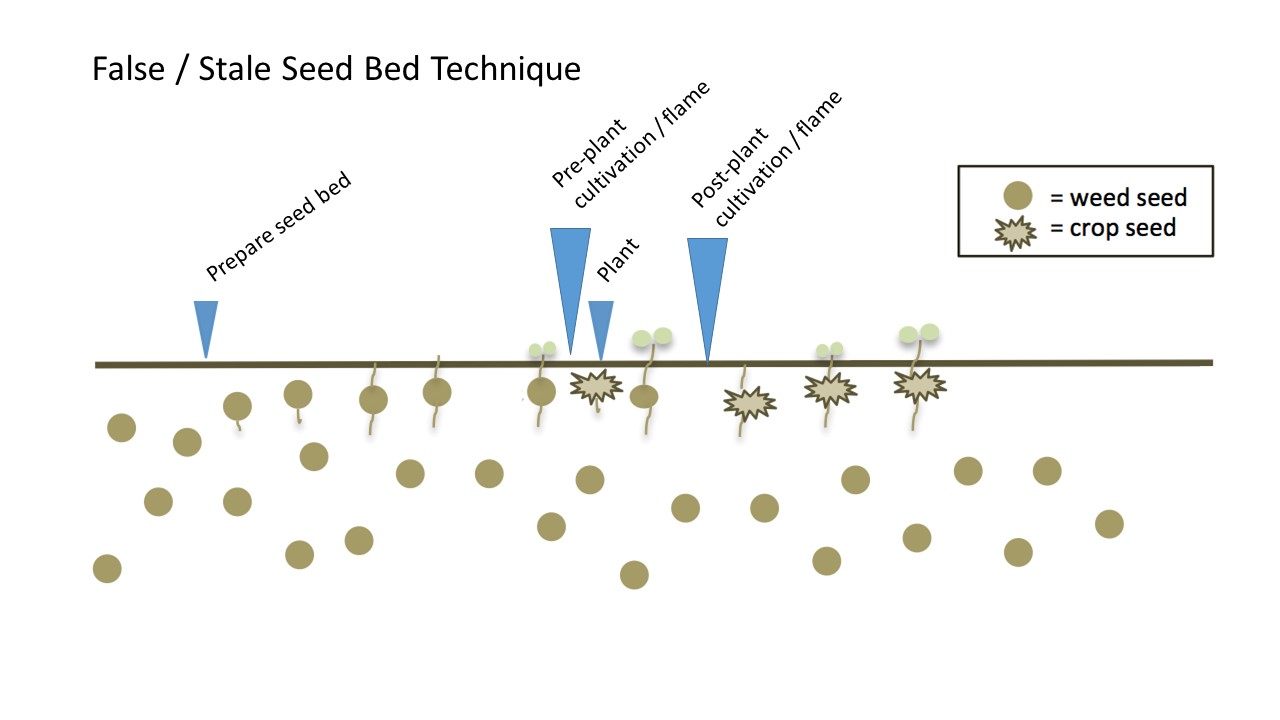Author: Natalie Hoidal, UMN Extension Educator for local foods & vegetable production & Jared Goplen, UMN Extension Educator for crops
With increased demand for local produce this summer, some growers are putting new fields into production. Oftentimes these fields were previously used for hay or fallow fields. When converting these types of fields into vegetable production, there are a couple of important things to consider:
1. Take a soil test
Always start with a soil test. Fallow lands can be high in organic matter, but they can also have significant nutrient depletion, especially if they've been harvested for hay. Use the
Nutrient Management Guide for Commercial Fruit and Vegetable Crops in Minnesota to make nutrient management decisions based on your soil test, and review the
organic fertility supplement for an overview of the N-P-K balance of various sources of manure and compost.
2. Consider whether the field was previously sprayed
If the land was previously managed by a neighbor or someone other than you, double check the history of herbicide applications to the field, and read the labels for whatever products were sprayed. Depending on what was sprayed, there may be planting restrictions.
3. Get to know your weeds
 |
| Weed ID resources on the UMN Extension website |
Ideally, you could avoid planting vegetables the first year after converting a new field in order to get a handle on weed management. The first year of production can often have significant weed issues, especially when converting old hay or fallow fields. We realize that this year is a bit unique due to the suddenly increased demand for local vegetables.
Any time you plant into a new field, expect a weedy season. If you're curious to see which weeds will be most prevalent in your fields, take a few samples of soil across your field. M the samples with some potting soil, and spread them across a flat that you would use to start seedlings. Keep it in your greenhouse or a warm spot and water it as you would seedlings. Weed seeds from the soil seedbank will germinate, and you can identify them accordingly.
Why go through all the effort? This process can give you a sense of what to anticipate and help you develop a management plan. Do you have mostly annual weeds in your seedbank? If so, shallow cultivation could be your main strategy. Is flaming a strategy you like to use? Flaming will only really be effective on broadleaf weeds.If more perennial or grass weeds are present, other strategies may need to be considered.
4. Anticipate perennial weeds
 |
| Canada Thistle, NPS Photo/ Mel Harte |
If you're planting into a old hay fields that have not been tilled, anticipate perennial weeds. Perennial weeds survive and sometimes spread through their root systems, meaning they thrive in undisturbed soil. Fields that have had regular tillage are less likely to have perennial weeds due to continual disturbance of their root systems.
Difficult perennial weeds like Canada Thistle tend to be present in clumps rather than evenly distributed across the field. Taking note of where they are now can let you direct extra attention to those spots later in the season. When controlling perennial weeds with tillage, several passes are likely needed to control them.
5. Use a stale seedbed
Tilling the soil in the spring can bring weed seeds to the soil surface and stimulate germination. If you plant at the same time as you till and prepare your beds, your seeds will emerge at the same time as many of the weed seeds, leaving you with fewer options for management. By preparing your seed bed and waiting a week or two before planting, you can allow a window of time for weeds to emerge. Then a shallow cultivation pass or a flame weeder can be used just prior to planting to remove small weed seedlings. The longer you're able to wait, the more weed seeds will germinate before planting. Post-planting cultivation or flame weeding can be used again following planting.
6. Plant quick-to-harvest crops
Rather than planting a crop that requires months to mature in newly planted fields, plant short successions of a crop like lettuce. If you have a 21 day crop and weeds get out of hand, you're more likely to be able to harvest before the weeds go to seed. After harvesting, mowing or tillage can be used to control weeds. (Imagine trying to mow a weedy field of tomatoes...).
 |
| Buckwheat cover crop. Image: Koba-Chan |
7. Try to work in a summer fallow period
If possible, work in a fallow period mid-summer. A fallow period gives you weed management options you don't have access to when you have actively growing crops. These options include: solarization and occulatation, frequent mowing, in-season tillage, and planting smother cover crops like buckwheat or Sorghum Sudangrass. Regardless of your strategy, be sure to take the opportunity to prevent weed seed production, which can make weed problems worse for next year.



Comments
Post a Comment